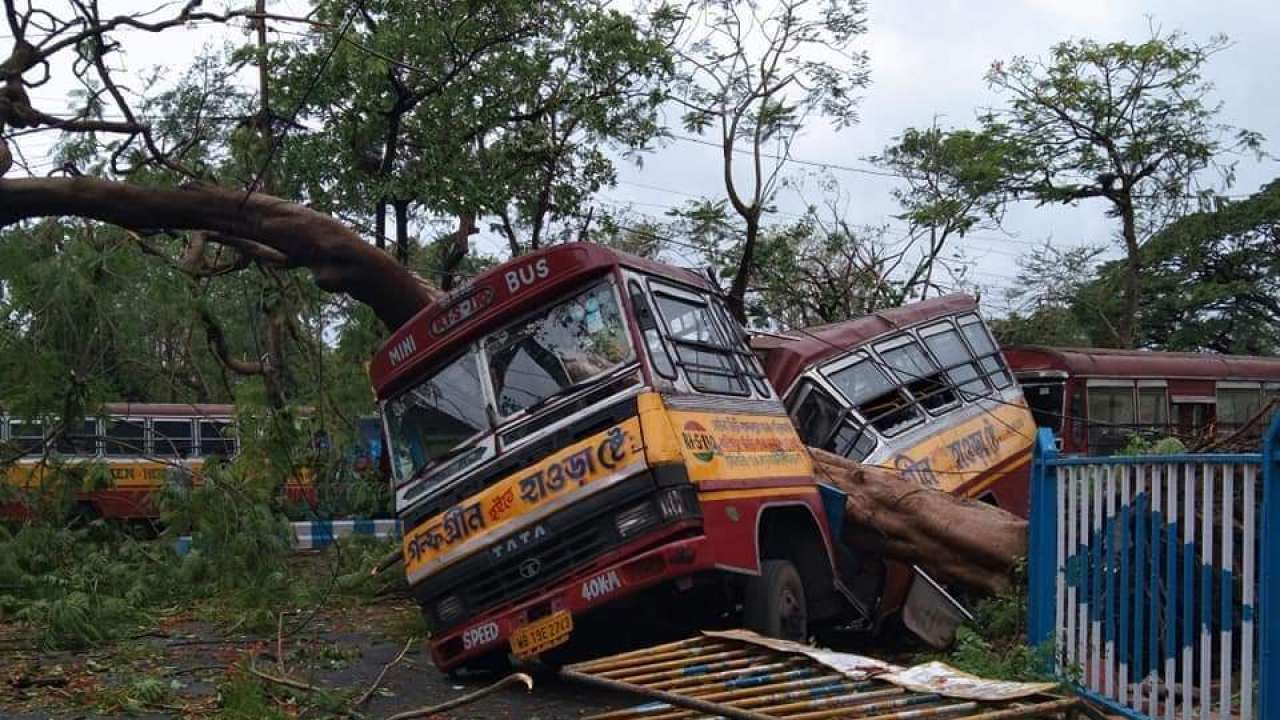
As India battles through the Covid-19 crisis, the people of eastern India, particularly West Bengal, are facing a humanitarian crisis like no other. With the Cyclone Amphan ravaging through parts of Bengal, people, especially from the underprivileged sections of society have lost all hope.
Over 80 people have died due to the cyclone and thousands have been rendered homeless and though the Chief Minister of West Bengal, Mamata Banerjee, has announced a compensation of Rs. 2.5 lakh to the family of each deceased, it seems like very little consolation for them, knowing they will take years to recover from the trauma and build their lives from scratch.
The gales of cyclone Amphan blew away with them the dreams of people and not just their belongings.
Cyclone Amphan was to be a ‘super cyclone’ but weakened into an ‘extremely severe cyclonic storm’ as it made landfall in West Bengal. Speaking to Vox, CARE India’s director Shantamay Chatterjee said that in the most affected areas in West Bengal and Odisha, about 90 percent of ‘social assets’ – places like health centers, schools and businesses – had been destroyed or damaged by Amphan.
The poorer sections of society in eastern India saw everything being snatched away from them slowly in front of their eyes as the cyclone raged through the state.
Siddheshwar Majhi, a West Bengal fisherman who lost everything to Cyclone Amphan told India Today, “I am devastated, I can only eat poison or hang myself.” Majhi and his wife Alpana used to earn a living by cooking meals for tourists who came to Tajpur, a popular beach located 20 kilometres from Digha, which was pummelled severely after the landfall.
Majhi said he had lost the last of his savings, partly because of the coronavirus and then due to the cyclone. They were already living hand to mouth since the coronavirus lockdown began. The story of Siddheshwar is just one of many who have lost everything to the cyclone.
How and where will social distancing come into the picture when a storm blows through the city and you have to crouch and hide to save your life? And how will one get over the fear of contracting the infection of Covid-19, while knowing that no social distancing will be observed in shelters where all you can hope is that the storm doesn’t damage the last bit of what you have that you call yours?
In Odisha, reports Newsclick, the worst-affected people from the cyclone-ravaged districts of Odisha – Kendrapara, Jagatsinghpur, Balasore, and Bhadrak – were not willing to come to the shelter homes due to the fear that they would not be able to follow social distancing norms. In the face of such insurmountable difficulties, 1.5 lakh people were shifted to safer places. It was indeed a great accomplishment that a huge segment of affected and vulnerable population was moved at such a pace by the Odisha administration, which has already been under severe strain due to fifty days of the lockdown to weaken the transmission of the highly infectious SARS-CoV-2.
Mamata Banerjee said that her cash-strapped state, has suffered losses to the tune of up to Rs. 1 lakh crore in the wake of the devastation caused by Cyclone Amphan.
British Nature journal in a paper published on May 15 said that 2020 is likely to be the warmest year on record. The American National Oceanic and Atmospheric Administration in March said that there is a 74.67% chance of 2020 being the warmest year ever and a 99.94% chance that it will among the top five warmest years, Hindustan Times reported.
A paper by a group of scientists and students of the Massachusetts Institute of Technology listed that heat waves in north India, floods in the delta regions of West Bengal will likely intersect with the Covid-19 crisis over the next 12 to 18 months.
Addressing both these disasters, and more climate change related devastation to follow, governments need to ensure that there is electricity and water supply to everyone to avoid the risk of transmission of Covid-19, the paper said.
While it is now up to the government to ramp up measures to contain the aftermath of this crisis, the loss of life is inconsolable and the rocky road of rehabilitation that lies ahead given the population of those affected, the resources available and the resources damaged and the bureaucratic loopholes, has hardly reached its end.
Related:
Blows of the sword to a corpse: Mamata Banerjee on Cyclone Amphan
Exclusive: What Amphan means for Mamata Banerjee
No respite for migrants as Cyclone Amphan is set to hit WB and Odisha